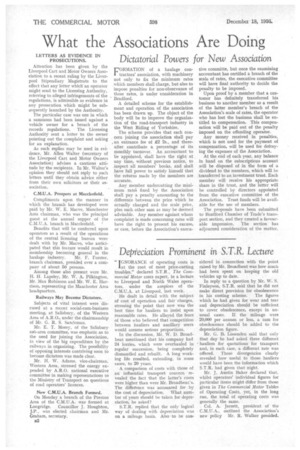Depfeciation Prominent in &TR. Lecture
Page 36

If you've noticed an error in this article please click here to report it so we can fix it.
" IGNORA.NCE of operating costs is
at the root of most price-cutting troubles," declared S.T.R,, The Commercial Motor costs expert, in a lecture to Liverpool and North Wales operators, under the auspices of the C.M.U.A. at Liverpool, last week.
He dealt in detail with the subject of cost of operation and fair charges, stressing the point that now was the best time for hauliers to insist upon reasonable rates. He allayed the fears of those who believed that competition between hauliers and ancillary users would assume serious proportions.
In the discussion, Mr. W. D. Broadbent mentioned that his company had 24 lorries, which were overhauled in regular succession, being completely dismantled and rebuilt. A long working life resulted, extending, in some cases, to 20 years.
A comparison of costs with those of an influential transport concern revealed the fact that the latter's costs were higher than were Mr. Broadbent's. The difference was accounted for by the cost of depreciation. What number of years should be taken for depreciation, he asked?
S.T.R. replied that the only logical way of dealing with depreciation was on a mileage basis. Also to be con
sidered in connection with the point raised by Mr. Broadbent was how much had been spent on keeping the old vehicles up to date.
In reply to a question by Mr. W. S. Firdayson, S.T.R. said that he did not make direct provision for obsolescence in his costing scheme. The figures which he had given for wear and tear and depreciation should be sufficient to cover obsolescence, except in unusual cases. If the mileage were 20,000 per annum or less, a sum for obsolescence should be added to the depreciation figure.
Mr. G. B. Lissenden said that only that day he had asked three different • hauliers for quotations for transport and, in each case, a different rate was offered. Those divergencies clearly revealed how useful to those hauliers would have been the information which S.T.R. had given that night.
Mr. J. Austin Baker declared that, whilst operators' individual figures for particular items might differ from those given in The Commercial Motor Tables of Operating Costs, yet, in the long run, the total of operating costs was generally the same.
Col. A. Jerrett, president of the C.M.U.A., outlined the Association's new policy Mr. R. Walker presided.




















































































